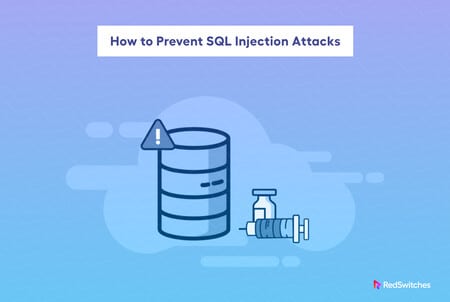Understanding SQL Injection Attacks

SQL injection attacks represent a significant threat to web security, emerging as one of the most prevalent and damaging forms of cyber intrusion. Historically, these attacks date back to the late 1990s, underscoring their long-standing presence in the realm of cybersecurity threats. At their core, SQL injection attacks exploit vulnerabilities within an application’s database query mechanisms. Malicious actors insert arbitrary SQL code into a query, which the database then executes, often leading to unauthorized access, data breaches, and compromised system integrity.
To comprehend the gravity of SQL injection attacks, consider some real-world examples. One notable incident is the 2008 Heartland Payment Systems breach, where attackers used SQL injection to steal over 130 million credit card numbers, resulting in significant financial and reputational damage. Another example includes the 2017 Equifax breach, which exposed the personal information of 147 million individuals, also reportedly due to SQL injection vulnerabilities.
The impact of SQL injection attacks is not limited to large corporations. Small and medium-sized enterprises (SMEs) are equally vulnerable, often due to limited resources for robust cybersecurity measures. According to a report by the Open Web Application Security Project (OWASP), SQL injection remains among the top ten most critical web application security risks. This highlights the need for comprehensive understanding and effective mitigation strategies.
Statistics further illustrate the severity of these attacks. Research by Positive Technologies in 2020 found that 67% of web applications were susceptible to SQL injection vulnerabilities. Additionally, the Verizon Data Breach Investigations Report (DBIR) consistently lists SQL injection as a common attack vector, emphasizing its persistent threat to data security.
Understanding SQL injection attacks is crucial for anyone involved in web development and cybersecurity. By recognizing how these attacks operate and the potential damage they can cause, organizations can prioritize securing their databases and implementing effective countermeasures to protect sensitive information.
Input Validation and Sanitization
In the realm of cybersecurity, input validation and sanitization play crucial roles in defending against SQL injection attacks. These methods ensure that user-provided data is carefully scrutinized before being processed by the server, thereby mitigating potential threats.
Input validation is the process of verifying that the input provided by users meets the expected format and type. This can include checking for correct data types, predefined patterns, and length constraints. For instance, if a form expects a user’s age, input validation would ensure the value is a positive integer. On the other hand, input sanitization involves cleaning the input by removing or neutralizing any potentially malicious content. This step is essential to prevent harmful code from being executed.
Best practices for input validation include using built-in validation functions provided by programming languages. For example, in Python, the `re` module can be used to check for valid email formats, while in JavaScript, the `typeof` operator can verify data types. Similarly, input sanitization can be implemented using functions like PHP’s `mysqli_real_escape_string` or Java’s `PreparedStatement` to safely incorporate user inputs into SQL queries.
Consider the following example in Python, which demonstrates input validation and sanitization:
import redef is_valid_email(email):return re.match(r'^[w.-]+@[w.-]+.w+$', email)user_email = input("Enter your email: ")if is_valid_email(user_email):sanitized_email = user_email.replace("'", "''")print("Valid and sanitized email:", sanitized_email)else:print("Invalid email format.")Common pitfalls to avoid include relying solely on client-side validation, which can be easily bypassed by attackers. Always implement server-side validation and sanitization as a second line of defense. Additionally, avoid constructing SQL queries directly with user inputs; instead, use parameterized queries or prepared statements. Failure to do so can render your applications vulnerable to SQL injection.
By adhering to these best practices and understanding the nuances between input validation and sanitization, developers can significantly reduce the risk of SQL injection attacks, thereby enhancing the security of their applications.
Using Prepared Statements and Parameterized Queries
Prepared statements and parameterized queries are powerful techniques for mitigating the risk of SQL injection attacks. These methods work by separating SQL code from the data being inserted, ensuring that user input cannot interfere with the SQL execution. This separation fundamentally changes how SQL queries are constructed and executed, enhancing security and performance.
In traditional SQL queries, user inputs are directly concatenated into the SQL string, making the application vulnerable to malicious inputs. For example, a basic SQL query might look like this:
String query = "SELECT * FROM users WHERE username = '" + userInput + "'";In contrast, prepared statements and parameterized queries use placeholders for input values, which are then securely bound to the query. This approach ensures that user inputs are treated strictly as data, not executable code. Here’s how prepared statements can be implemented in various programming languages:
Java:
String query = "SELECT * FROM users WHERE username = ?";PreparedStatement stmt = connection.prepareStatement(query);stmt.setString(1, userInput);ResultSet rs = stmt.executeQuery();PHP:
$statement = $pdo->prepare("SELECT * FROM users WHERE username = :username");$statement->bindParam(':username', $userInput, PDO::PARAM_STR);$statement->execute();$result = $statement->fetchAll();Python:
cursor.execute("SELECT * FROM users WHERE username = %s", (userInput,))result = cursor.fetchall()Prepared statements and parameterized queries offer numerous benefits. Firstly, they dramatically reduce the risk of SQL injection by ensuring that user inputs cannot alter the structure of SQL commands. Secondly, these methods enhance performance, especially in applications that execute the same queries multiple times with different inputs. The database can optimize and cache the execution plan for prepared statements, leading to faster execution times.
By incorporating prepared statements and parameterized queries into your database interactions, you can significantly bolster your application’s security posture while potentially improving its performance. These techniques represent a best practice in modern application development, ensuring robust protection against one of the most common and dangerous web vulnerabilities—SQL injection.
Database Permissions and Access Controls
Database permissions and access controls are fundamental elements in mitigating SQL injection attacks. By carefully managing who has access to what data and capabilities within the database, organizations can significantly reduce the potential damage in the event of a successful attack. The principle of least privilege (PoLP) is a critical strategy in this context. It dictates that users should be granted the minimum levels of access—or permissions—necessary to perform their job functions. This reduces the attack surface and limits the potential impact of any compromised account.
To implement the principle of least privilege effectively, start by identifying all database users and their respective roles. Each role should have a clearly defined set of actions they are permitted to execute. For instance, a database administrator (DBA) might have full access, while a regular user might only have read access to certain tables. Regular audits of these permissions are crucial to ensure that no unauthorized privileges have been granted, either deliberately or accidentally.
Role-based access control (RBAC) takes the PoLP a step further by grouping users into roles based on their job functions and assigning permissions to these roles rather than to individual users. This not only simplifies the management of permissions but also enhances security. For example, in MySQL, you can create a role using the following command:
“`sqlCREATE ROLE ‘reporting_user’;GRANT SELECT ON database_name.* TO ‘reporting_user’;GRANT ‘reporting_user’ TO ’employee1′, ’employee2′;“`
In PostgreSQL, the process is similar:
“`sqlCREATE ROLE reporting_user;GRANT SELECT ON ALL TABLES IN SCHEMA public TO reporting_user;GRANT reporting_user TO employee1, employee2;“`
Regularly auditing database permissions is another essential practice. Tools like Microsoft SQL Server’s built-in auditing feature or third-party solutions can help track changes and access patterns, making it easier to spot and rectify unauthorized access. By integrating these strategies—PoLP, RBAC, and regular audits—organizations can create a robust framework that significantly mitigates the risks associated with SQL injection attacks.

